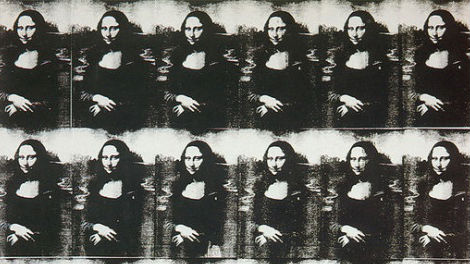In an example of turning an absurd inquiry into a philosophical exploration, Jonathon Keats once opened a restaurant for plants so that they could experience their own sort of five-course meal. The way he did it was by altering the ways the plants were exposed to nutrient-granting colors of light. By splitting the spectrum over time, Keats was able to “surprise” plants in the process of feeding them.
While no one would ever confuse Keats for Julia Child, he does offer a unique perspective on the joy of “cooking” for plants. His naive question (How can we let plants experience the excitement of good cuisine?) transformed into an exploration of the nature of humanity’s relationship with food as well as the overall question of what makes us human. Keats says this is just one example of how we can shift our perspective to tackle bigger philosophical questions.
Jonathon Keats: I love to eat. I like just about everything and to me cuisine is really one of the signal achievements of our society. Plants play an essential role in that process by giving us the goods, the fruits and vegetables that provide much of the raw material for our cuisine. And yet plants themselves never get to experience cuisine as we do. And to me that seemed always to be kind of a shame I suppose that they should give us something as extraordinary as they do and not get it in turn. So I started to think about how planets might get their own form of cuisine that would go beyond the everyday experience that they have of gouging themselves on sunlight. If you think about it our cuisine is simply a fancy way in which the basic nutrients that we need are articulated in balance with each other to provide an aesthetically pleasing experience. I figured that there's no reason why you can't do the same thing for a plant, given that plants are consuming the full spectrum of sunlight and that different parts of the spectrum give plants different essential elements in their diet. So I started to look at some of the leading cookbooks by Julia Child and others and trying to reverse engineer from those cookbooks the various ways in which different ingredients work together, the way in which different food stocks that are necessary for our sustenance are put together to transform them into cuisine. At the same time I started looking at sunlight and the way in which different parts of the spectrum are essential to plants and plant respond to different parts of the spectrum in different ways. And then I started to map the one onto the other in order to make a photosynthetic cuisine, a photosynthetic restaurant for planets. The idea was to build a meal that the plant would experience over the course of the day by filtering sunlight through colored filters. Where the order in which the colors were exposed to the plant would be the cuisine that would have all of the nutritive value that the plants would get were they exposed to the full spectrum for the entire day but would put those nutrient in relationship to each other in a way that would have a sort of culinary satisfaction in addition to simply a metabolic satisfaction.
So in the case of a comfort food for plants or a French sort of style cuisine, a Continental cuisine what I can do is I can take the sunlight that occurs over the course of the day naturally where it moves from more in the red to more in the blue range and then back again. And I can increase the redness and the blueness. And I can make it so that it's a more extreme version of what happens in nature. Or I can switch it up. I can make it so that the plant is constantly surprised and that surprise becomes, in the way that avant-garde cuisine works, part of the pleasure of the meal. So I opened a restaurant in the town of Sacramento California at the Crocker Art Museum out in the Gardens. There were hundred-year-old rosebushes that had always been gouging on sunlight just as it came down to them from the sky. Had never had a cuisine of their one. And I built some filters into the garden that were oriented according to how the sun arcs across the sky. So that naturally, over the course of the day, the plants get a meal that involves many different colors. And then since not every plant can go to Sacramento, in fact they can't travel at all for the most part, I decided that plants at home should have the opportunity to have a photosynthetic cuisine as well. I made a TV dinner for plants that was broadcast over public access television in New York where you can put your plants in front of the TV and the colors that appeared on the screen provided the plants with a full meal.
It's pretty weird when you see a plant enjoying a gourmet meal. Maybe a little bit off-putting, possibly even upsetting. This is something that is specific to us, to our culture. This is something that we do with plants and to plants. And when we see a plant doing this, having a great meal, I think that it has the effect of taking us outside of ourselves and allowing us to reorient ourselves. To think about what it is that makes our cuisines so special that makes a meal so special. And more broadly what is it that makes our culture what it is. What is it that makes us humans is really the question that you end up asking at the point that you start finding characteristically human activities being performed by other species. Because when you see another species doing something that is so particularly human and it hasn't been anthropomorphized but rather has been specifically deliberately brought into their domain according to their needs, you find yourself sort of in a parallel universe where you can look back on your own world, on your own habits and they no longer look so familiar. They're no longer so routine. I think that we can do this every day and it doesn't take putting up a bunch of filters in a garden in Sacramento. It doesn't necessarily even take building something literally. Simply the act of contemplating the transposition of something that we take for granted to another species is enough to make whatever was so totally obvious as to be essentially invisible to us. And to make it suddenly strange enough that we can grapple with it and that we can reconsider it in new ways.




